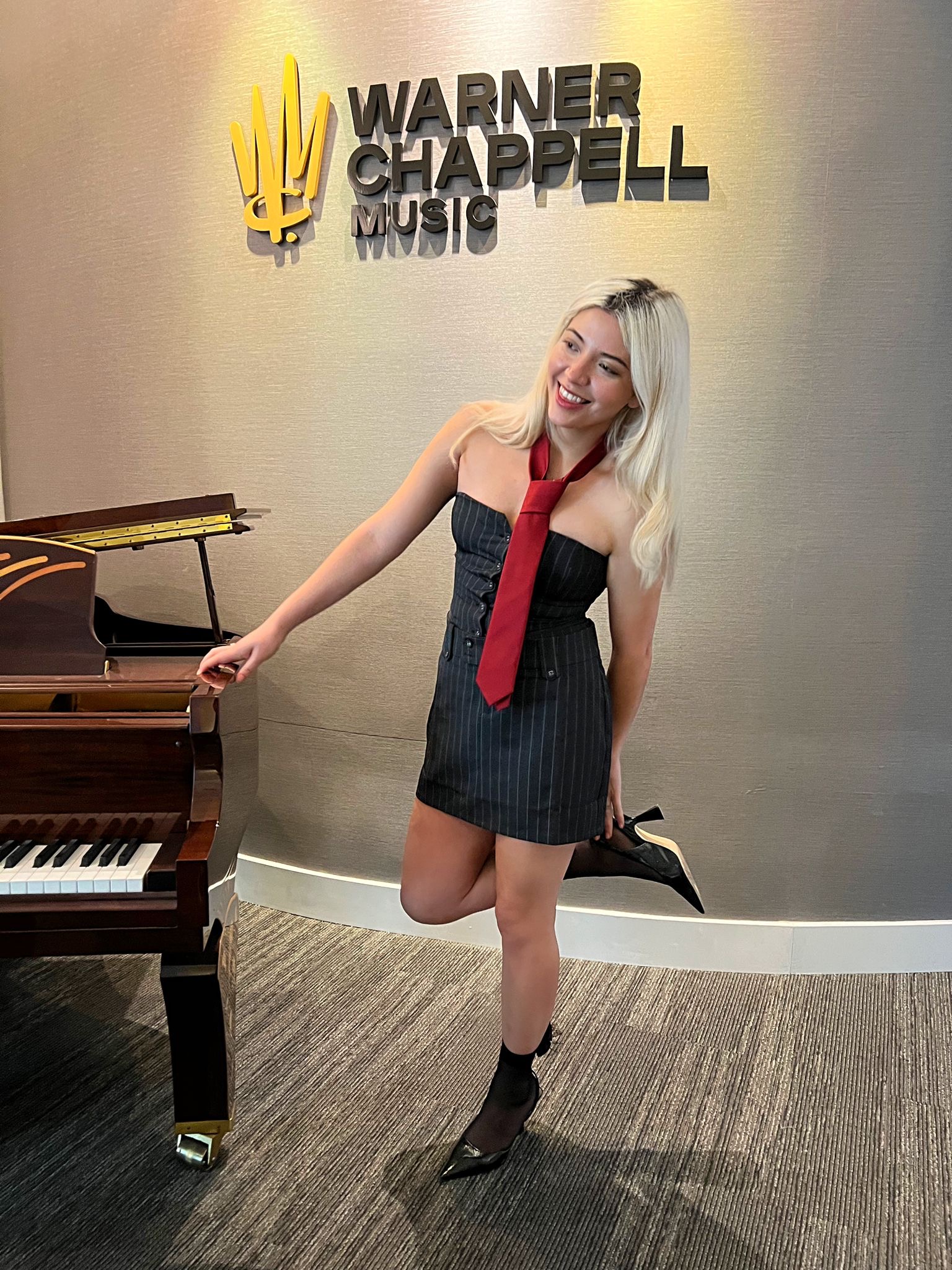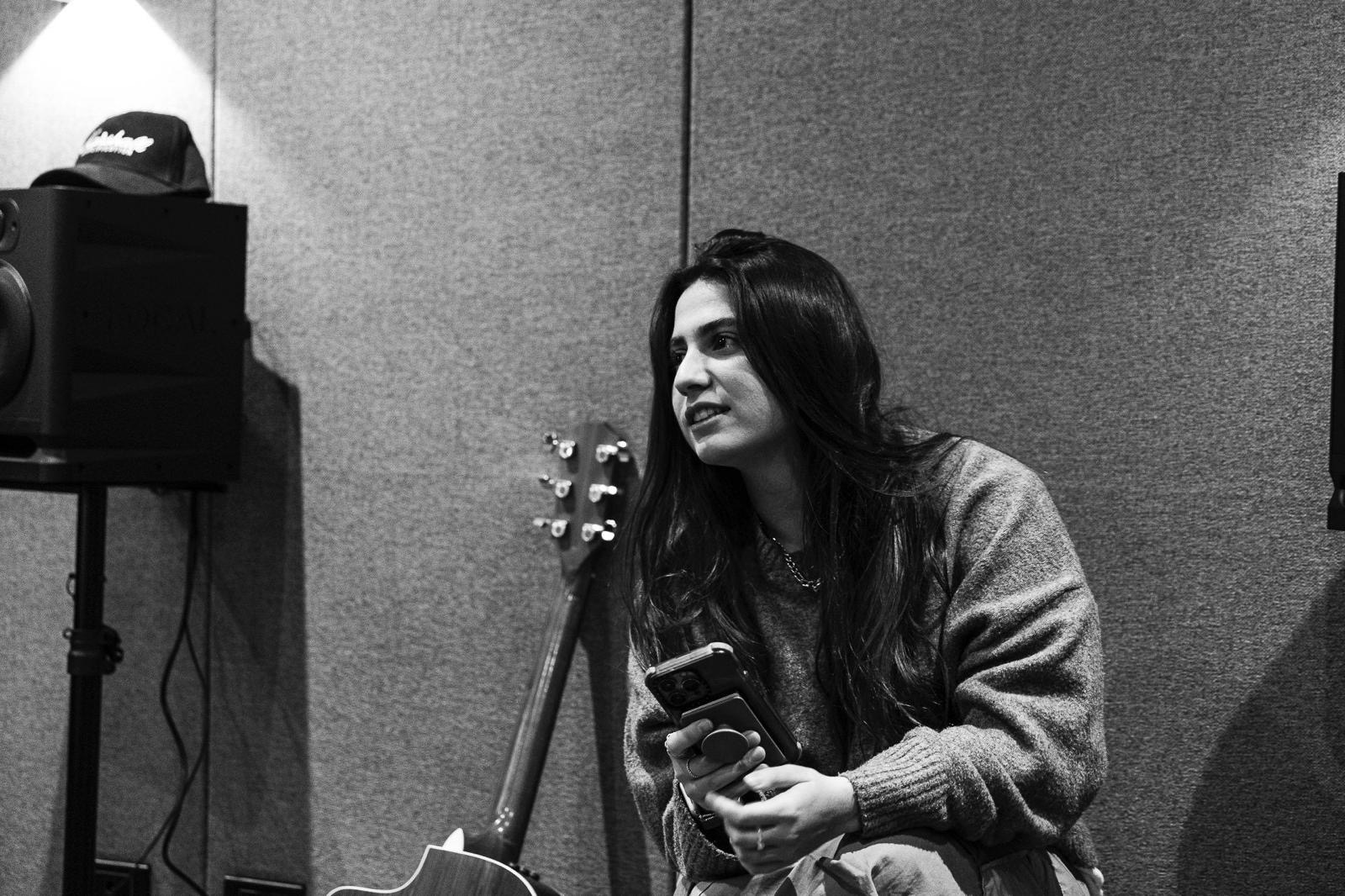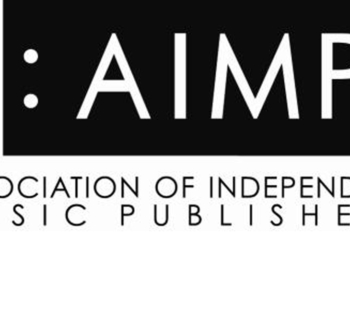When she first moved to Los Angeles from Argentina almost 40 years ago, Claudia Brant was writing three to five days a week, building a catalog that now includes over 3,000 songs in various genres, written in Spanish, Portuguese, and English. Shares Brant, “I don't remember the titles. I don't remember the words. It was a lot.” She signed to Warner Music at age 22, releasing South American albums Claudia Brant and Tu marca en el alma, and when her focus shifted to working directly with artists, she began doing two sessions and an average of two singles a week, jet-setting between Miami, Spain, Puerto Rico, and elsewhere. 1,200 of her songs have now been recorded in English, French, Spanish, Portuguese, and Korean. As SESAC’s Latina Songwriter of the Year for three consecutive years (2007-2009) and ASCAP’s Latina Songwriter of the Year in 2012 and 2015, Brant is the West Coast Vice-President of the Latin Songwriters Hall of Fame and has served as a Trustee of the National Academy of Recording Arts and Sciences for over twenty years, remaining a Governor of the Los Angeles Chapter. While she still writes music, her main priority now involves mentoring young songwriters to help them on their way.
Brant’s mentorship momentum grew when the chair of the Songwriting Department at Berklee College of Music (he is now the Dean of Professional Writing and Music Technology), Brant’s good friend (and previous writing partner), Rodney Alejandro wanted to add a course on Latin songwriting. Enlisted (she was already teaching songwriting online) to lead the charge, Brant soon realized how much talent there was. “I would give them homework they have to deliver,” she says. “There were some of them whose delivery was incredible [and] I started thinking, my God, I have to do something with these kids?!” Adding that it took her five or six years to get her first label manager meeting, Brant says that, while she had some help from ASCAP, BMI, and SESAC, she didn’t understand how to interact with the executives she needed to meet. “[I] couldn’t really sit down with these people, play them my songs, and tell them, ‘hey, I think this would be good for your artist.’” As an established writer, she now only has to pick up the phone to make things happen. Brant wants to use her access to help talented new songwriters get opportunities they might otherwise have available.
With a pipeline of new talent through her Berklee songwriting class, Brant joined forces with Warner Chappell to help develop young artists through her publishing company, ChaChaCha Music Publishing (instagram.com/chachachamusicpublishing), and she is committed to helping her writers be seen and heard. “Warner Chapel has 500 writers. I have five, so I'm on it every day,” says Brant. “I would be very happy if one of them got an ASCAP, SESAC, or BMI award. I would be delighted if they got a GRAMMY nomination as writers. They don't want to be artists, so that kind of recognition is really important.”
While Brant says the process and structure of songwriting for Latin music versus mainstream is mainly the same, she has been analyzing top Grammy nominees for Record of the Year and Album of the Year and concludes that they generally all lean towards pop (except for Jacob Collier, who is more jazz sounding). The same cannot be said for Latin music, however. “On the Latin side, you have pop, alternative, salsa, regional Mexican, bolero, cumbia, reggaetón, trap. There are so many genres,” reveals Brant. “I try to teach my kids to be a chameleon. You should be able to get into a session in whatever genre and survive. There are way more genres in the Latin market.”
Starting out writing mostly pop songs herself, Brant never shied away from a mix of genres or languages, but admits that the key to any good songwriting endeavor is careful collaboration. “I worked in genres not so familiar to me,” she says. “When I write regional Mexican, I never do it without a writer from (…) from Mexico that really knows the words [and] how many chords we should use. They know that, and I don't because I come from pop, so whenever I write for that genre, I try to do it with someone who can teach me or train me.” Making calls to top collaborators to help her writers, she says the feedback has been incredible. “They have all called and thanked me because the collaboration will help bring a young flavor to their songs,” she says.
To create the best possible co-writing outcome, Brant also emphasizes the importance of limiting the number in the room to four people maximum (except in co-writes with bands, in which case she considers the group as one of the writers). “What I don't like—and I'm absolutely opposed to,” says Brant, “is the ‘birthday party’ writing session, which means ten people in a room. Even when that happens, it's not even good? You don't need more than two or three people to write a wonderful song.” One of Brant’s writers recently had five people show up for a session and Brant advised her to stand up and say that she is taking 33.33%, and not splitting it six ways. “She did, and that was it. No one argued,” says Brant. “You have to put your foot down early.“ Admitting that industry splits can still be an issue (her last challenge was as recent as six months ago), Brant shares that, “In those moments, I lose my patience, my drive, and [am] really disappointed, but I just grab my guitar and the melodies and the words keep coming in, so I guess I should not stop?”
Songwriting is all about “the craft of coming up with a unique melody, something you have never heard, that takes a completely unexpected turn, [combined with] the use of the words,” says Brant. “We know that amor rhymes with color and I don't want to hear that. Give me something else. You don't want to hear a song that's called “I Love You,” “I Miss You,” “Without You,” or “I'm Lonely.” Please give me issues. Give me “Ironic” by Alanis Morisette. How many ironic songs are there registered at ASCAP, BMI or SESAC? None. Titles are so important.” In addition to being prolific in their writing, Brant finds her best prospects by looking at “how they name their songs, the words they use, the twists they do with words, the turns of the melody that are unexpected,” adding that, “those are the things that catch my excitement about a song.”

Rising mentees, Latin songwriters Agua Tinta (instagram.com/aguita_tinta) and Laura Prias (instagram.com/lauraprias_) had nothing but praise and gratitude for their experience so far. “Being able to work with Claudia is amazing because she's a songwriter herself,” says Tinta (who is based in Los Angeles). “She's been through what we're going through, so she understands us, supports us, and guides us. Almost no one in the industry as a publisher does that for the writers, so working with Claudia is the best thing that could have happened to me.” Adds Prias, “It's a dream come true. She has a life of experience in this industry. If she sees that magic, that talent, she is going to put all her effort in to help you and let you know you're doing well, or [that a] song needs more work. Not everyone has this help. It’s a blessing to be working with her. It's an honor. I'm living the dream. What's next is already happening.”
Encouraging her writers to step out and introduce themselves, Brant says she had an innate drive from a young age and is hoping to support her mentees to build that muscle. “When I want something, I just go for it. That’s something some of my kids need to learn; to believe in themselves. When they have five cuts each on major labels, they're going to be able to go for it. That's a bit of what happened to me, but that drive was always there.”
Her mentees are very aware of the opportunities that are opening up and are soaking it all up. “I'm so grateful for all her help and the faith she has in our work,” says Prias. “We just had the Latin GRAMMY week and being at her side, looking at her being so versatile with people [saying] ‘look, this is my new writer.’ Knowing that Claudia Brant is saying that was amazing [and] working with her in an actual session blew my mind.” Shares Tinta, “One day we decided to have a session and she was having breakfast. I had just rung up. It was emotional. We were talking and she was like, ‘so what are we going to write about today?’ In one second, she had the chorus. Once she started singing the chorus with the lyrics, that blew my mind. It is one of my favorite moments – it was very chill, but I learned so much.”

Brant says that choosing which projects to work on—and her collaborators—is also about the right energy. “When I first got here [to Los Angeles], and maybe for ten years, I used to write with whomever, whenever, whatever. Now, there has to be some kind of particular connection,” she says. “I have a partner I produce with. [He sometimes someone comes into the studio, we look at each other and we're like, ‘no – this is not going to happen.’ Sometimes we want to do the entire record of the person. There's this particular connection that happens with some people.” For Brant, success comes down to hard work and connections. “It’s a combination of both,” she says. “If I'm going to take you to a meeting with a big label, you need to play this person three songs that are going to blow his mind, so then he thinks, ‘this girl is good - I'm going to ask her for more.’ [It’s] the quality of the song, plus the relationship you have for five minutes with this person, and you build it from there.”
As her writers begin to be invited into bigger rooms, Brant expects at least one of them to land an artist session very soon. “When you get in the room with artists, the chances of getting the song recorded are way higher than just writing for pitch. That’s something I want them to achieve,” she says. “I'm teaching again in January, so I'm going to have another 25 kids. They're like my children. My children are in college, so I adopted some more.”
Speaking about her current mentees, Brant says they “have such a bright future ahead. I want [them] up on stage with an ASCAP award and nomination for best GRAMMY Original Mexican or Best GRAMMY Urban Pop. Sometimes it takes five years, sometimes seven, and sometimes [just] one. It takes time, but it's going to happen because their way of writing [is] very unique. They use words that I wouldn't use.”
“When I first started, five cuts in a record could still sell 10 million copies,” says Brant. “Now we need to have the single and get paid by streaming services. [To work] as a songwriter now, write as much as you can to amplify the possibilities of getting a cut. The songs have to be catchy, with a title, words, and melody that are unique so that they have a chance of becoming a single. If you have a single and 2 billion streams, it’ll make a little check. Collaborating, co-writing in the studio with artists, and having as many songs as possible on a record, that can help. That’s the goal.”
With 11 Latin Grammy and Grammy nominations as a songwriter, artist, and producer, Brant’s songs have been recorded by artists including Camila Cabello, Carlos Santana, Barbra Streisand, Josh Groban, Ricky Martin, Enrique Iglesias, Demi Lovato, Paola Guanche, Teo Bok, and many others. Ongoing collaborations include Bruno Mars, Dianne Warren, David Foster, Danny Elfman, Julio Reyes Copello, Walter Afanasieff, Desmond Child, partner Josh Cumbee, and Lil’ Eddie Serrano, to name a few. Winning a Latin Grammy for 2009’s Song of the Year for “Aqui estoy yo” and 2019’s Grammy for Best Latin Pop Album for Sincera, 2014’s “I’m not the only one” (as recorded by Frankie J.) was the title track for Pantaleón/Lionsgate film “Spare Parts” starring George Lopez and Marisa Tomei. Brant was inducted into the Latin Songwriter’s Hall of Fame in 2016.
“I was talking to a friend at the Latin GRAMMYs who won Songwriter of the Year and Producer of the Year,” says Brant. “Six or seven years ago, I was in a recording studio and he was serving coffee. What happened?! We don't know. I always say one song can change your life. One.”
In addition to ongoing songwriting credits, Brant spends the majority of her time giving back through classes, workshops, and mentorship across Argentina, Mexico, and the United States.
For more on Claudia Brant, visit: claudiabrant.com.














